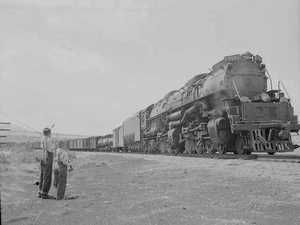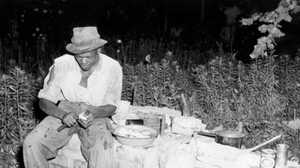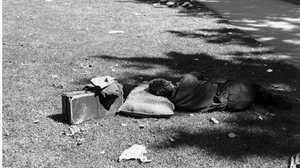Riding the Rails

Some left to escape poverty or troubled families, others because it seemed a great adventure. At the height of the Great Depression, more than 250,000 teenagers were living on the road in America. Many criss-crossed the country by hopping freight trains, although it was both dangerous and illegal.
Riding the Rails presents the poignant and little-known story of teen hobos during the 1930s, a time of desperation and bitter hardship. These young itinerant Americans were all searching for a better life; what they found was a mixture of freedom, camaraderie, misery, and loneliness.
Riding the Rails interweaves the evocative stories of ten men and women who left home in their youth. Producers Michael Uys and Lexy Lovell placed notices in national publications in search of individuals who rode the rails as teenagers. Three thousand people, now in their 70s and 80s, responded. Uys and Lovell selected a handful to tell their stories on camera.
"Some hadn't spoken of their experiences in sixty years. They poured their hearts out to us," says Uys. "They were just kids then and when they look back, it's with a blend of nostalgia and pain." Riding the Rails vividly combines the clear-eyed memories of witnesses with archival footage of teens riding atop speeding trains and newsreel interviews with lean-bodied kids full of bravado. The film features a rich soundtrack of American folk tunes of the time, including songs by Woody Guthrie, Elizabeth Cotten, Doc Watson, and Jimmie Rodgers.
Jim Mitchell left his Wisconsin home at the age of sixteen. Rene Champion was the same age when he left his home in Pennsylvania, as were John Fawcett from West Virginia and Bob "Guitar Whitey" Symmonds of Washington, who picked fruit in California to survive. In Louisiana, young Clarence Lee's father told him that there simply wasn't enough food to feed the family; the boy left home the next day. All began riding the rails.
Peggy DeHart ran away from home at fifteen, after her father struck her for cursing at a cow on the family farm. "There was this girl called Irene Willis and she wanted to go to Issaquah to see her parents," DeHart recalls. "She was going to hitchhike and she asked me to come along. And I thought that was a great idea."
DeHart sent letters to her family describing tight situations she and Irene encountered: "The police picked up Reen and I last night and put us in a cell. We sure made use of the cots. I hope they run us loose so that we can go again. This is the third time they've picked us up."
Teenagers who were new to the road had high hopes about where their journeys would lead them. Some tried to earn money and send it home. But work was scarce in a nation suffering from widespread unemployment. And young migrants were usually paid only a fraction of adult wages. "Once I worked for a man who wanted me to unload a coal car," recounts George Rhodes in letter. "I stood there and threw down the coal. I worked all day. He gave me two tomatoes."
Some yearned to ride the trains bound for the West, where they would become cowboys, or to big cities, where they could ship out and see the world. Seventeen-year-old James San Jule left Oklahoma for New York, but found no work. "I lived down in a subway kiosk for four months," he remembers, "and stole food from the Washington Market."
The road was an education about the ways of the world, full of harsh lessons: cold nights, brutal railroad detectives or "bulls," the humiliation of arrest, panhandling, social ostracism, days without food, and the dangers of losing a limb hopping trains.
Clarence Lee recalls the profound, almost unfathomable loneliness of this life at that time. "Some of it hurts now," he says, unable to hold back tears. "I don't think I was 20 miles down the road, riding in the blind of the car, and it was cold and miserable."
Jim Mitchell has similar memories: "Hell, I knew right then I had made a mistake. But you know, you're young and foolish and you don't say you made a mistake." San Jule recalls the bittersweet memory of receiving a package in the mail - a cake mailed by his mother for his 18th birthday-and eating it alone on a hillside, in tears.
The 1933 Warner Brothers film, Wild Boys of the Road, tried to scare young people away from life on the rails. In it, a boy falls onto the track and loses his leg to an oncoming train. The film didn't deter Bob "Guitar Whitey" Symmonds: seeing the movie actually inspired him to take to the rails.
"If you see the movie," he says, "that put the idea in your head, 'I could do that too, but I'm not gonna get my leg cut off like the kid in the movie.'" To this day, the sound of the train whistle is in Symmonds' blood. Now in his 70s, he still rides the rails, logging nearly 10,000 miles a year. During his absences, his wife tells those who inquire that he is on vacation, "traveling by train."
Riding the Rails is produced by Lexy Lovell and Michael Uys. Visit their website for more information about this award-winning film.
For more information about the book, Riding the Rails: Teenagers on the Move During the Great Depression, by Errol Uys, visit his website.







